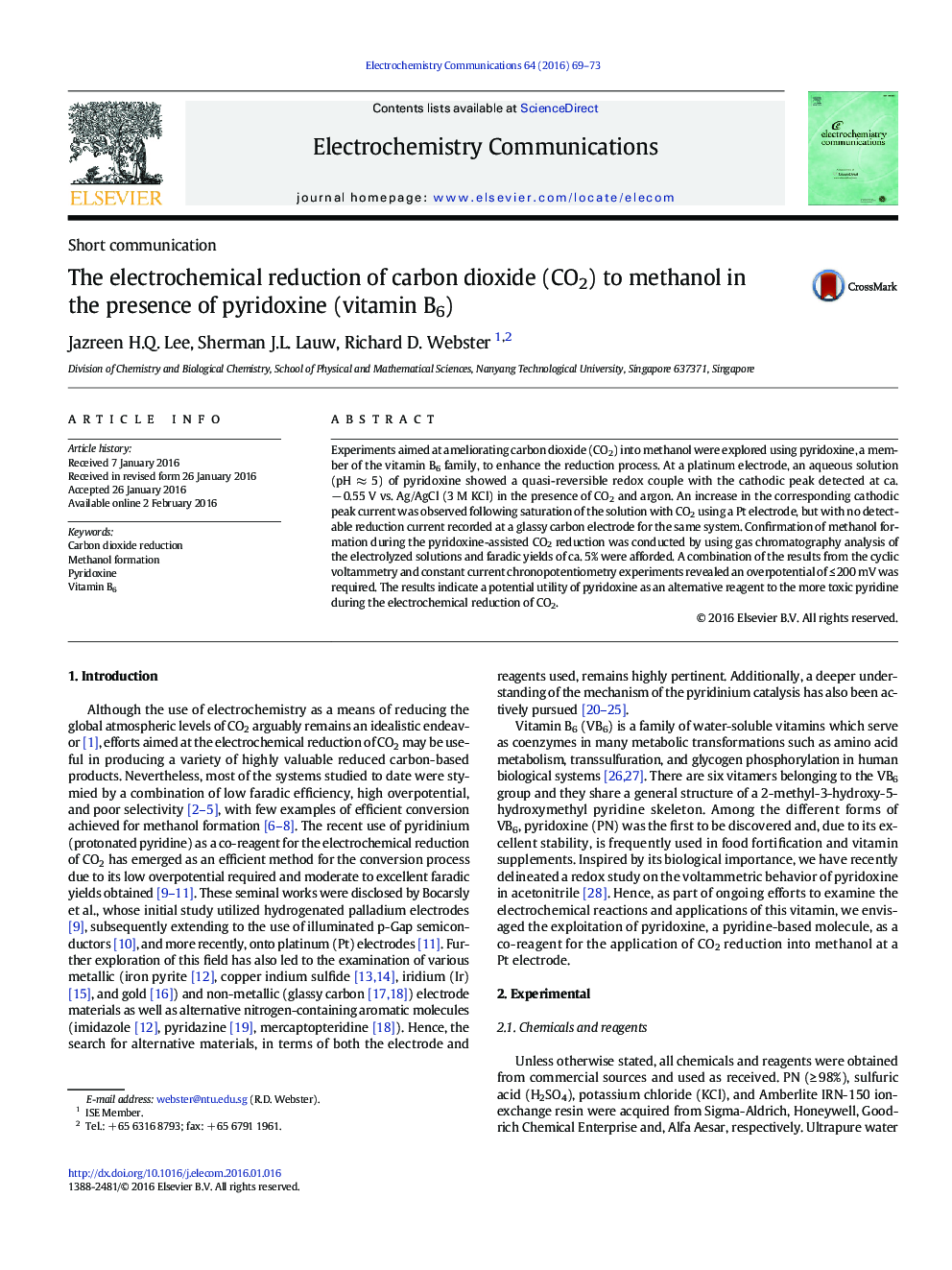| Article ID | Journal | Published Year | Pages | File Type |
|---|---|---|---|---|
| 178758 | Electrochemistry Communications | 2016 | 5 Pages |
•CO2 was electrochemically reduced in the presence of pyridoxine at a Pt electrode.•CO2-saturated solutions gave larger currents than Ar-purged solutions.•No observable cathodic processes were recorded on a glassy carbon electrode.•Preparative scale reductions of CO2 gave 5% faradic yields for methanol formation.
Experiments aimed at ameliorating carbon dioxide (CO2) into methanol were explored using pyridoxine, a member of the vitamin B6 family, to enhance the reduction process. At a platinum electrode, an aqueous solution (pH ≈ 5) of pyridoxine showed a quasi-reversible redox couple with the cathodic peak detected at ca. − 0.55 V vs. Ag/AgCl (3 M KCl) in the presence of CO2 and argon. An increase in the corresponding cathodic peak current was observed following saturation of the solution with CO2 using a Pt electrode, but with no detectable reduction current recorded at a glassy carbon electrode for the same system. Confirmation of methanol formation during the pyridoxine-assisted CO2 reduction was conducted by using gas chromatography analysis of the electrolyzed solutions and faradic yields of ca. 5% were afforded. A combination of the results from the cyclic voltammetry and constant current chronopotentiometry experiments revealed an overpotential of ≤ 200 mV was required. The results indicate a potential utility of pyridoxine as an alternative reagent to the more toxic pyridine during the electrochemical reduction of CO2.
Graphical abstractFigure optionsDownload full-size imageDownload as PowerPoint slide
